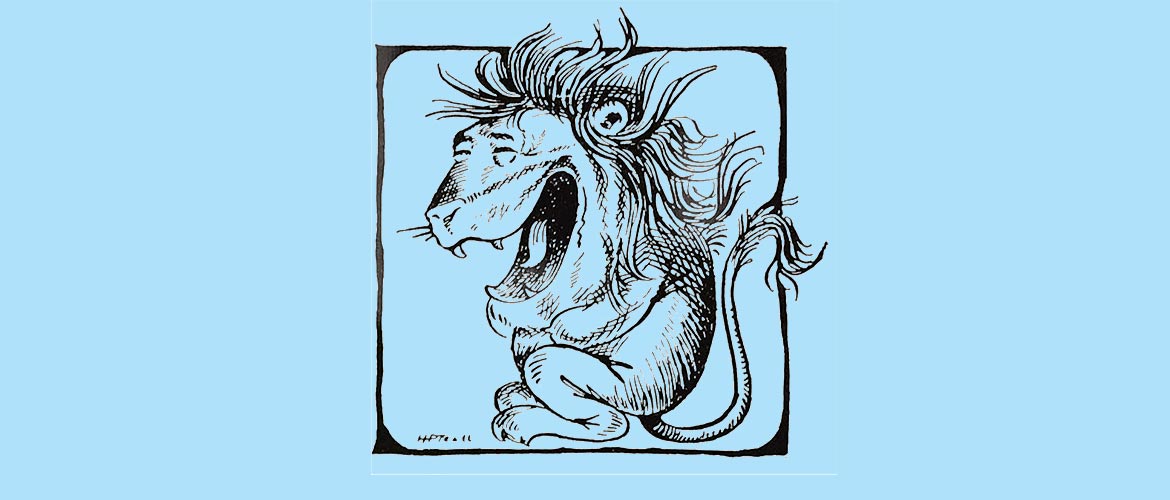 No time to read? Listen to the podcast.
No time to read? Listen to the podcast.
Roar, lion, roar, and wake the echo of the Hudson Valley.
Those are the opening words of the Columbia University fight song. I mention them only because there are people who would like you to believe that the song Roar Lion Roar has something to do with this story.
It doesn’t.
Despite what you may have read on the internet, or heard whispered in places where film cognoscenti gather to burnish their résumés, Roar Lion Roar has nothing to do with why M-G-M uses a lion as its symbol—even though the star of both the symbol and the song is a lion, and the man who came up with the idea was a Columbia University student.
It’s just more palatable than the truth.
So much for Columbia pride. And so much for the image of a university that, for two-year’s salary, could transform an undisciplined young man into a polished Columbian.
In his college days, Columbia student Howard Dietz—the same Howard Dietz who wrote the lyrics for such songs as By Myself, Dancing in the Dark, and That’s Entertainment—worked part time for the Philip Goodman advertising agency. Samuel Goldwyn, one of Goodman’s clients, needed a logo for his new Goldwyn Pictures studio. Dietz came up with a lion, inspired by the university’s lion mascot. (Dietz would go on to become M-G-M’s chief of publicity and advertising.)
Dietz wrote as much in his autobiography, Dancing in the Dark: Words by Howard Dietz.
But Dietz never gave credit to Roar Lion Roar. And the original Leo did little to merit any such description. Look at early versions of the logo, which you can do on YouTube, and you’ll see Leo looks as if he were filmed after a lobotomy rather than, say, during a colonoscopy.
So why are there stories crediting Roar Lion Roar as Dietz’s source of inspiration? Perhaps because Dietz’s real inspiration didn’t sit quite right with Columbia alums and administrators. Dietz’s inspiration was a lion, all right, but one that spoke to Columbia’s Ivy League image the way an embezzling conviction spoke to your honesty.
In 1913, Dietz enrolled in Columbia’s School of Journalism. In those days, if you had writing in your blood there were only two appropriate campus outlets for your creativity. One was the university newspaper, The Daily Spectator, and the other was Jester.
Jester was the monthly campus humor magazine, founded on April Fool’s Day, 1901 with Walter Henry Grace, ’01, as editor. In the first edition, Grace wrote that Jester would be an “outlet for the fund of art, wit and humor inherent in the mind of Columbia students.”
Jester became a proving ground, of sorts. A retrospective in the Spring/Summer 1981 edition of Columbia College Today described Jester as offering a “permissive aegis” under which “hundreds of people were able to perfect their craft, experimenting, falling on their faces, trying on all the funny hats before they stepped out the door.”
Scan Jester’s tables of contents over the years, as I did one June afternoon in the Columbia library, and you’ll see articles by the likes of Bennett Cerf, Herman Wouk, Corey Ford, Joseph Mankiewicz, Max Shuster, Larry Hart, Thomas Merton, I. A. L. Diamond, and Allen Ginsberg. During his time as a Jester contributor, editor and board member, his cohorts in literary subversion included Herman Mankiewicz and future dramatist, lyricist, and screenwriter Morrie Ryskind.
While it’s possible he whistled Roar Lion Roar while exercising his wit at his typewriter, Dietz claimed it was Jester logo that inspired Leo the Lion. In the retrospective, Columbia College Today quoted Dietz as saying “I got the idea from the laughing lion decoration in the college comic, The Jester. The lion used in the magazine was a symbol of Columbia…which in turn was taken from the lion on the crest of King’s College. That’s powerful lineage enough for a film company.”
Powerful for the rest of the world, perhaps, that only saw Leo on the screen. But Dietz’s origin story favored not a fierce, competitive lion but one convulsed with laughter. Among alumni and administrators that had to be the equivalent of a public relations train wreck.
Linking Leo to Roar Lion Roar sounds like little more than a desperate ploy to rehabilitate the image of a university that boasted to parents it could transform their undisciplined young men into polished Ivy Leaguers—for two-year’s salary,
Or, maybe Dietz, himself, had second thoughts. It’s doubtful even a Columbia education would protect him from Goldwyn’s wrath once he learned the symbol of his company was a lion with a chronic case of the giggles.
In that case, if I were Dietz, I’d whistle Roar Lion Roar around the office every chance I got.
Start your Sunday with a laugh. Read the Sunday Funnies, fresh humor from The Out Of My Mind Blog. Subscribe now and you'll never miss a post.
Mind Doodle…
Corey Ford, a Jester alumnus, came up with the name Eustace Tilley for the cartoon dandy who symbolizes The New Yorker magazine. Tilley was his maiden aunt’s name. He choose Eustace, as he wrote in his autobiography, “for euphony.”
